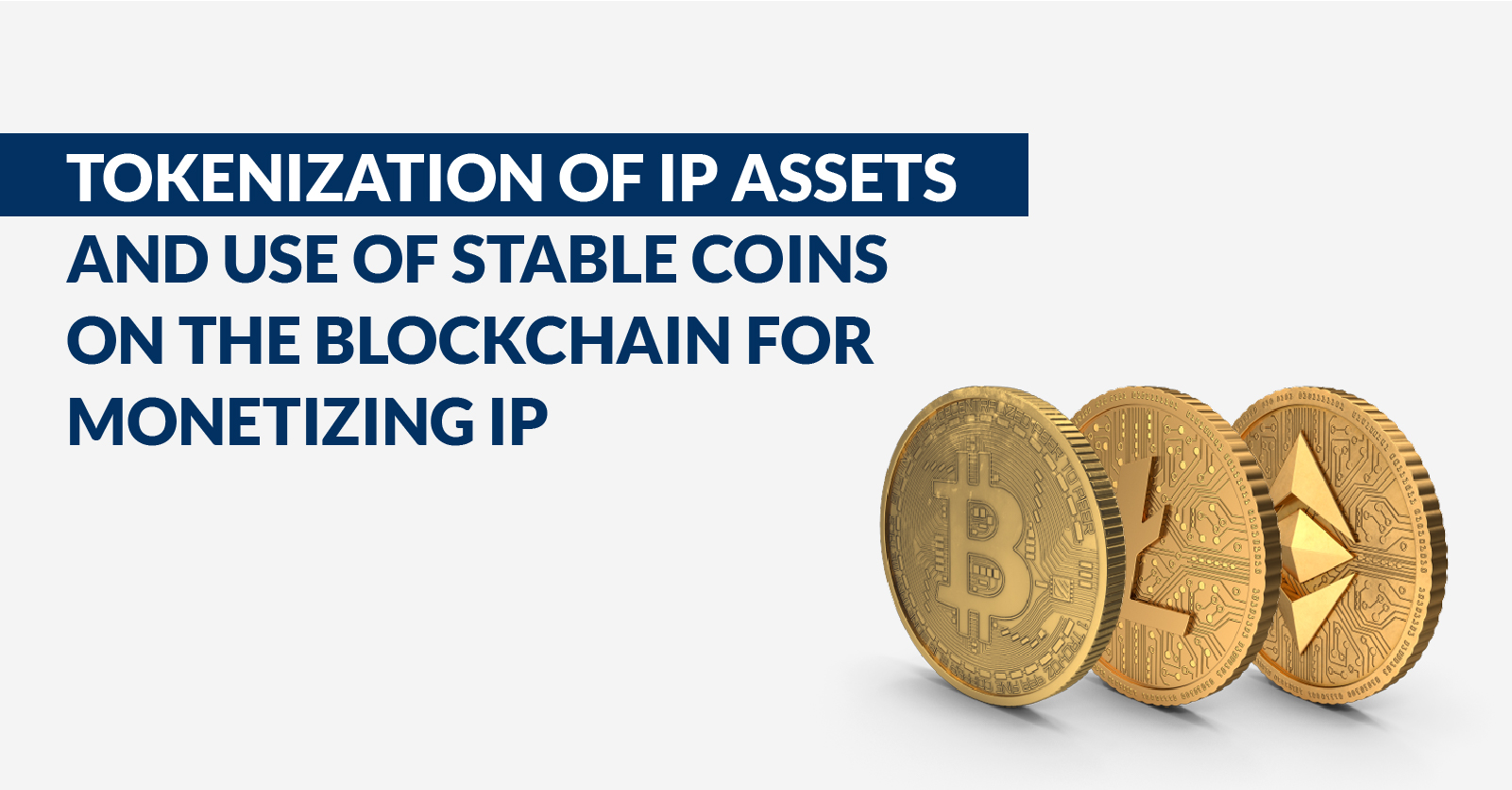Intellectual property (IP) assets, such as patents, trademarks, and copyrights, can be valuable assets for businesses and individuals. However, they are often illiquid and difficult to monetize. The concept of tokenization has gained popularity as a way to create liquidity for illiquid assets.
Tokenization of intellectual property (IP) refers to the process of converting the rights to an IP asset into digital tokens on a blockchain. This can provide a way to fractionalize ownership, enhance liquidity, and facilitate more efficient trading of IP rights. Combining this with stablecoins for IP finance introduces a stable and reliable digital currency to streamline transactions in the IP space.
Tokenization and stablecoins can enhance the liquidity of IP assets, as they can be traded on blockchain-based marketplaces. Digital tokens and stablecoins enable global participation in IP markets, reducing barriers to entry for investors worldwide.
As stated above, tokenization refers to the process of creating digital tokens that represent ownership of an asset. In the case of IP assets, tokenization allows for fractional ownership of the assets, making it easier for investors to buy and sell them.
To tokenize an IP asset, the owner must first determine the value of the asset and the number of tokens to be created. This can be done by working with a tokenization platform or a blockchain development company.
Once the tokens are created, they can be sold on a blockchain-based platform. Investors can buy and sell the tokens, providing liquidity for the IP asset. Tokenization of IP assets has several benefits, including increased liquidity, fractional ownership, and greater transparency and security.
Tokenization of IP assets can provide a solution to the liquidity problem by creating digital tokens that represent ownership of the IP assets. These tokens can be bought and sold on a blockchain-based platform, allowing for fractional ownership of the assets.
Tokenization of IP assets has several benefits. First, it can provide IP owners with a new way to monetize their assets. Instead of selling the entire asset, they can sell fractional ownership of the asset, making it more accessible to investors. Like selling or asking for investment of piece of a valuable puzzle. This can help to increase liquidity in the market for IP assets and provide IP owners with a new source of revenue. Anyone in the market may be able to become an investor on a valuable puzzle by investing in a piece of the valuable puzzle and benefit from it.
Therefore, tokenization of IP assets can provide investors with a new way to invest in IP assets. By buying digital tokens that represent ownership of the assets, investors can gain exposure to the potential upside of the assets without having to buy the entire asset. This can make investing in IP assets more accessible to a wider range of investors.
Finally, tokenization of IP assets can provide greater transparency and security in the market for IP assets. By using blockchain technology to create and trade the tokens, the ownership and transfer of the assets can be recorded and tracked in a secure and transparent manner. Available worldwide.
Let´s consider the following example, an IP owner of trademark and copyrights of a big-budget movie requires financing to finish and launch the movie to the market. The upfront investments to make, the risks of a production crew going over-budget, etc. would require a very wealthy investor(s). Hard to achieve regularly. However, a successful film can earn a return on the investment multiple times over in a relatively short time frame. By tokenizing the movie and its IP rights, many different people may become investors by purchasing one or more tokens and have a big return on its investment in a short period of time.
Stablecoins are pegged to the value of fiat currencies, providing stability compared to more volatile cryptocurrencies like Bitcoin or Ethereum. Stablecoins are designed to maintain a stable value relative to a specific asset or currency. They are often used in the cryptocurrency world as a way to provide stability and reduce volatility. Stable coins can also be used by IP owners as a way to receive payment for licensing their IP assets, for instance.
When an IP owner licenses their IP asset, they typically receive payment in a specific currency, such as US dollars, Japanese Yen, or euros. However, the value of the currency can fluctuate, which can create uncertainty for the IP owner. By using stable coins, the IP owner can receive payment in a digital token that is designed to maintain a stable value relative to the currency they prefer. This can provide greater certainty and stability for the IP owner.
Stable coins can also provide greater efficiency and speed in the payment process. Traditional payment methods, such as wire transfers, can be slow and expensive, particularly for international transactions. By using stable coins, payments can be made quickly and at a lower cost.
Tokenization of IP assets and the use of stable coins provide opportunities for financing and investment. For instance, as we stated above by tokenizing their IP assets, IP owners can offer investors the opportunity to invest in the assets and receive a portion of the revenue generated from licensing or selling the assets. This becomes to the IP owner a new source of financing and investment, while also providing investors with exposure to the potential upside of the assets.
IP owners may use stable coins to receive financing quickly and at a lower cost than traditional financing methods, such as bank loans. This can be particularly useful for startups or small businesses that may have difficulty obtaining traditional financing.
In summary, tokenization can provide increased liquidity, fractional ownership, and greater transparency and security for IP assets. Stable coins can provide greater stability and efficiency in the payment process for licensing or selling IP assets. Finally, tokenization and the use of stable coins can provide opportunities for financing and investment, providing IP owners with a new source of revenue and investors with exposure to the potential upside of the assets. As the importance of IP assets continues to grow in the global economy, it is likely that we will see more advanced models and strategies for IP monetization, payment, and financing being developed in the future.
Singapore, South Korea, Japan and China are leading the way. Is it an example to follow? Of course, transparency and compliance with local rules is mandatory and a necessary requisite.
We at OLARTEMOURE are committed to help our IP Owners to monetize their IP assets that we helped to protect and register worldwide. Please contact the author at carlos.parra@olartemoure.com if you are interested or want to know more.

Carlos Parra
Partner | Head
of Asia Office







